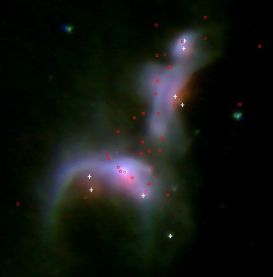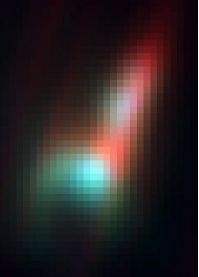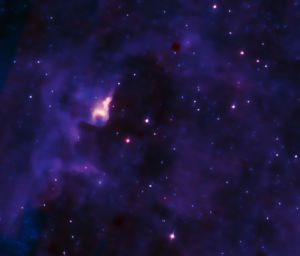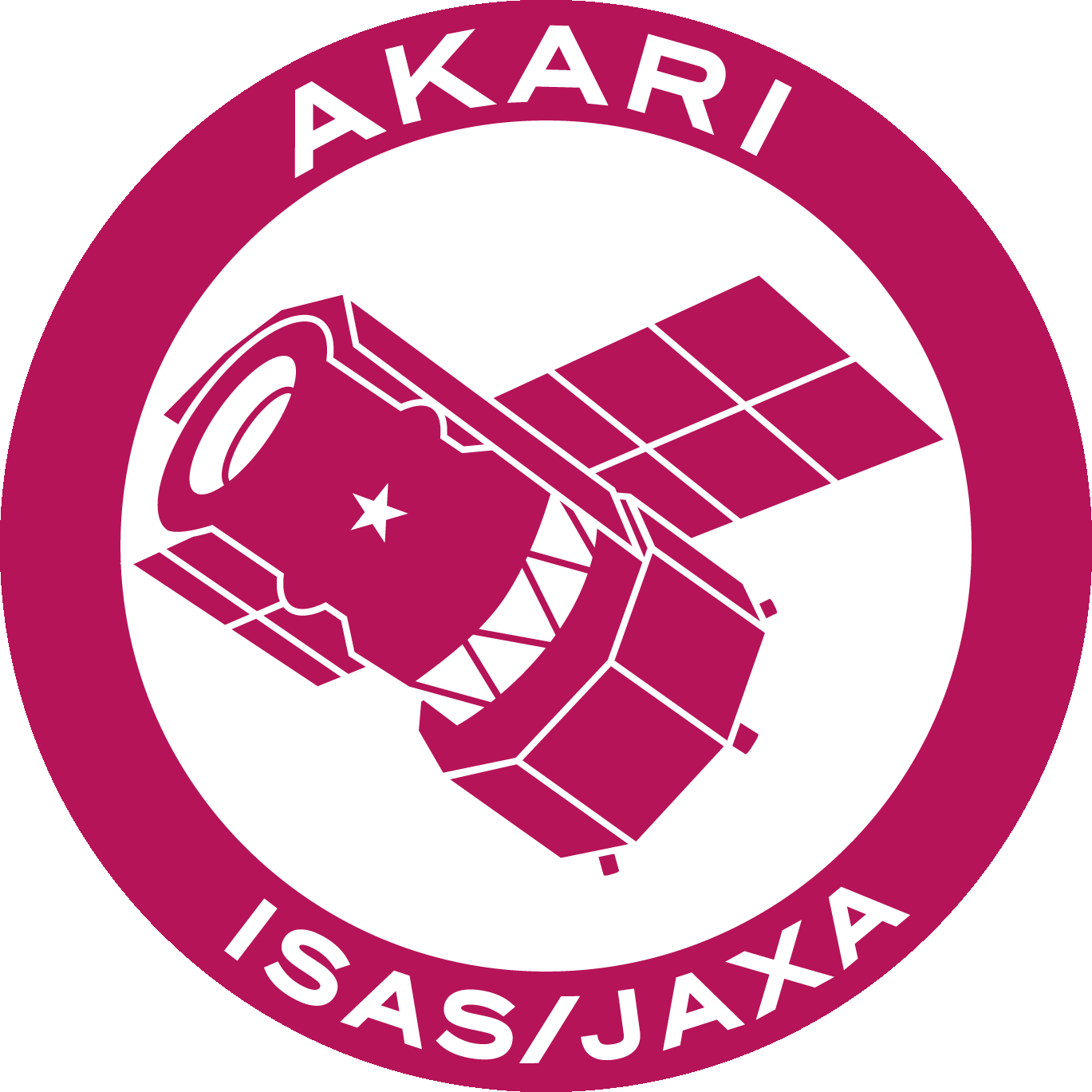AKARI Results
Star formation history revealed by AKARI wide-area survey observations
- Star formation over three generations in the nebula IC4954/4955 in the constellation Vulpecula -
IC4954/4955 are reflection nebulae in the constellation Vulpecula, located around 6500 light years distant from the Sun. The Near- and Mid-infrared Camera (IRC) and the Far-Infrared Surveyor (FIS) instruments onboard AKARI carried out observations of this region at seven different infrared wavelengths (9, 11, 18, 65, 90, 140, and 160 micrometres), and revealed a continuing cycle of star formation over three generations, across spatial scales of one to one hundred light years.
Astronomers believe that stars are formed in high-density molecular clouds, with the star-formation process being triggered by explicit events. It is known that supernova explosions and intense radiation from young high-mass stars sweep the interstellar material together into high-density regions leading eventually to the onset of star formation. AKARI infrared observations over the wavelength range from 9 to 160 micrometres detected the evidence of such star formation over enormous spatial scales of one to a hundred light years in size.
The left panel of Figure 1 shows a three-colour composite image from AKARI's 9 (blue), 11 (green), and 18 (red) micrometre data. Each wavelength represents a different facet of the star-formation process. The 18 micrometre data represents interstellar matter heated by the intense radiation from young, hot, massive stars. The 9 and 11 micrometre images are sensitive to the infrared light from the organic molecules in interstellar space. Regions in white are bright in both 9-18 micrometres and are thought to be high-density regions with large amounts of organic molecules. Two arc like structures are clearly seen in the image. These are formed by a young, massive star (not seen in the image) at the centre of the nebula sweeping the material outward by their strong radiation pressure. The arcs are located at a distance of about one light year from the central star. Conversely, the colour composite image from the far-infrared data (right side of Figure 1) shows that the arcs are also heated by the central star and appear blue. The far-infrared image also shows lower-temperature material in the nebula (seen as red). These cooler regions contain large amounts of interstellar material that will eventually form a new generation of stars. Indeed these areas would appear dark when observed in normal visible light, consistent with the fact that interstellar material masks the light from the behind itself. This image powerfully demonstrates that far-infrared observations are vital to detect the material that is invisible to us in normal visual light.


Figure 1: (left) Three colour composite image from 9, 11, and 18 micrometre data taken by the IRC onboard AKARI. The actual spatial scale is approximately 13x20 light years. Red circles indicate the positions of newly born stars. (right) Colour composite image from the FIS data in 65, 90, 140, and 160 micrometres.
The red circles in the left panel of Figure 1 indicate the locations of recently born baby stars observed in 2 micrometre infrared light from ground based telescopes. The current AKARI observations have now also detected 11 micrometre infrared light from some of these same baby stars. These stellar infants are mainly distributed along the white region in near-and mid-infrared image and the red area in the far-infrared image. AKARI's observations clearly show that the parent generation of stars collectively sweep the interstellar matter together to give birth to their children. The actual distance between the parent and baby stars is about a light year.
Figure 2 is a two-colour composite from the 9 and 18 micrometre data of the surrounding region of the stellar nursery and is about 20 times broader than the previous figure. The brightest region in this figure is IC4954/4955. In addition a distinct hollow in the middle of the image is apparent. The diameter of this hollow is about a hundred light years. We suspect that an even earlier, first generation star (the grandparent) formed around several to ten million years ago, and that this object induced the star formation of the second generation including the IC4954/4955 region. Therefore, the AKARI data encompasses the cycle of star formation over three complete generations, over spatial scales of one to a hundred light years, in infrared light.

Figure 2: Two colour composite image of the surrounding region of the IRC4954/4955 Nebula with 9 and 18 micrometre data. The size of this image corresponds to 150 light years. The brightest region is IC 4954/4955. White dots are infrared stars. Notice the dark hollow region with a diameter of around 100 light years in the centre of the image.
This study is conducted by Dr. D. Ishihara, research fellow at the School of the Science, University of Tokyo.
Materials
- Figure 1 Left (© ISAS/JAXA)
- Figure 1 Right (© ISAS/JAXA)
- Figure 2 (© ISAS/JAXA)





